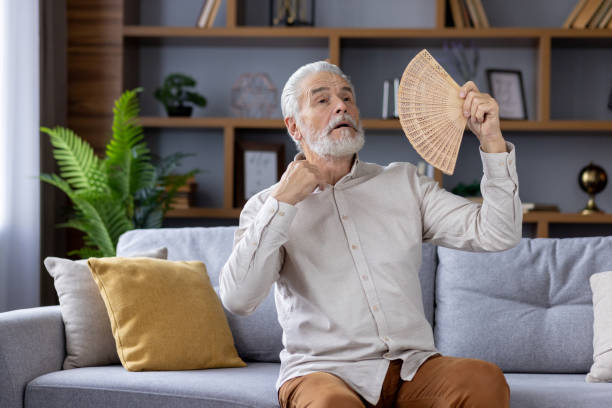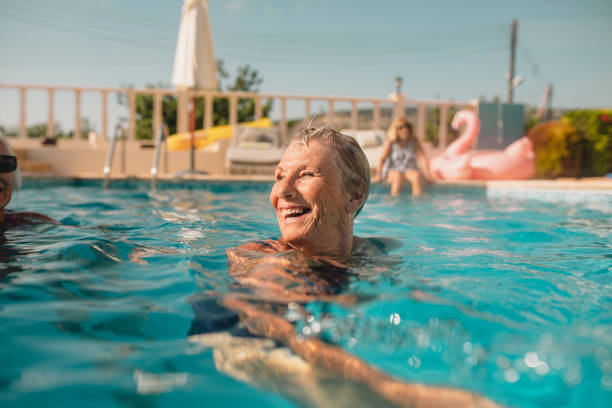As temperatures rise during the summer, so does the risk of heat-related illnesses, especially for older adults. Seniors receiving in-home care are particularly vulnerable due to age-related changes in the body, underlying health conditions, and the potential for isolation. Ensuring their safety during extreme heat periods is essential and life-saving. With the right precautions and support from caregivers, seniors can remain safe, healthy, and comfortable all season long.
Contents
- 1 Why Seniors Are More Vulnerable to Heat
- 2 Recognizing the Signs of Heat-Related Illness
- 3 Creating a Cool and Comfortable Home Environment
- 4 Staying Hydrated and Eating Light
- 5 Medication and Health Monitoring
- 6 Supporting Mental and Emotional Well-being
- 7 Emergency Preparedness and Communication
- 8 Conclusion: Prioritizing Safety and Comfort
Why Seniors Are More Vulnerable to Heat
As we age, our bodies become less efficient at regulating temperature. Seniors often have a diminished sense of thirst and may not recognize the signs of dehydration or overheating until it becomes dangerous. Chronic conditions such as heart disease, diabetes, or kidney issues can further impair the body’s ability to cope with heat. Certain medications—like diuretics or beta-blockers—can also exacerbate the problem.
Additionally, mobility challenges may make it difficult for older adults to access cool environments, and cognitive impairments can hinder their ability to respond appropriately to rising temperatures. These risk factors highlight the critical role of in-home caregivers in monitoring and managing heat exposure.
Recognizing the Signs of Heat-Related Illness
In-home caregivers must stay vigilant for symptoms that suggest heat-related stress. The most common conditions to watch for include:
- Heat exhaustion can present with heavy sweating, weakness, nausea, dizziness, and rapid pulse.
- Heat stroke, a more serious emergency, can cause confusion, fainting, dry skin despite the heat, and a high body temperature.
Immediate action—such as moving the individual to a cooler area, offering fluids, or contacting emergency services—is crucial if any of these symptoms appear.
Creating a Cool and Comfortable Home Environment

The home should serve as a haven from the summer heat. Caregivers can help by:
- Using fans and air conditioning: If air conditioning isn’t available, caregivers should ensure that fans are running, windows are shaded, and the hottest parts of the day are spent in the coolest areas of the home.
- Keeping blinds or curtains closed during midday to reduce indoor temperatures.
- Scheduling outdoor activities like walks or gardening during early morning or late evening hours when it’s cooler.
- Encouraging light, breathable clothing made from cotton or moisture-wicking fabrics to help regulate body temperature.
In-home care agencies or family members might also consider portable air conditioning units or community cooling centers as additional options.
Staying Hydrated and Eating Light
One of the simplest yet most effective ways to protect seniors from heat stress is to keep them well-hydrated. Because seniors may not feel thirsty until dehydration sets in, caregivers should:
- Offer water regularly, even if the senior doesn’t ask for it.
- Include hydrating foods such as fruits (like watermelon and berries) and vegetables (such as cucumbers and lettuce).
- Avoid caffeine and alcohol, which can lead to fluid loss.
- Prepare small, light meals that don’t require the stove or oven, both of which can add to the heat in the home.
Hydration isn’t just about water intake—it’s also about avoiding unnecessary fluid loss and keeping electrolytes in balance.
Medication and Health Monitoring
Certain prescriptions can interfere with the body’s heat regulation or increase sun sensitivity. Caregivers should review all medications with a pharmacist or physician and watch for any side effects that might be worsened by heat.
Additionally, regular monitoring of chronic conditions is vital. Blood pressure, blood sugar, and other health indicators may fluctuate with temperature extremes, and any irregularities should be promptly addressed.
Supporting Mental and Emotional Well-being
The physical dangers of heat are clear, but the emotional toll of being stuck indoors or feeling uncomfortable can also impact seniors’ mental health. Caregivers can:
- Engage seniors in stimulating indoor activities such as puzzles, music, or video calls with family.
- Encourage light physical activity like chair yoga or gentle stretching to maintain mobility.
- Monitor for signs of irritability, depression, or confusion, which may indicate not only emotional distress but also possible heat-related issues.
A caring presence and consistent companionship can make a significant difference in how well a senior copes with seasonal stressors.
Emergency Preparedness and Communication
Having a plan in place can save lives. Caregivers and family members should:
- Ensure emergency contact numbers are up to date and easily accessible.
- Know where the nearest cooling centers or emergency services are located.
- Equip the home with a thermometer to monitor indoor temperatures.
- Communicate frequently with family members about any concerns or unusual behaviors observed during periods of extreme heat.
Regular check-ins and updates help create a support system that surrounds the senior with care and vigilance.
Conclusion: Prioritizing Safety and Comfort
Summer should be a time of enjoyment and relaxation, not danger. For seniors receiving in-home care, safety during hot weather depends on thoughtful planning, proactive caregiving, and a commitment to health and comfort. By recognizing the risks, understanding preventive steps, and fostering a cool, calm environment, caregivers can ensure that their loved ones not only survive the summer but thrive in it.

